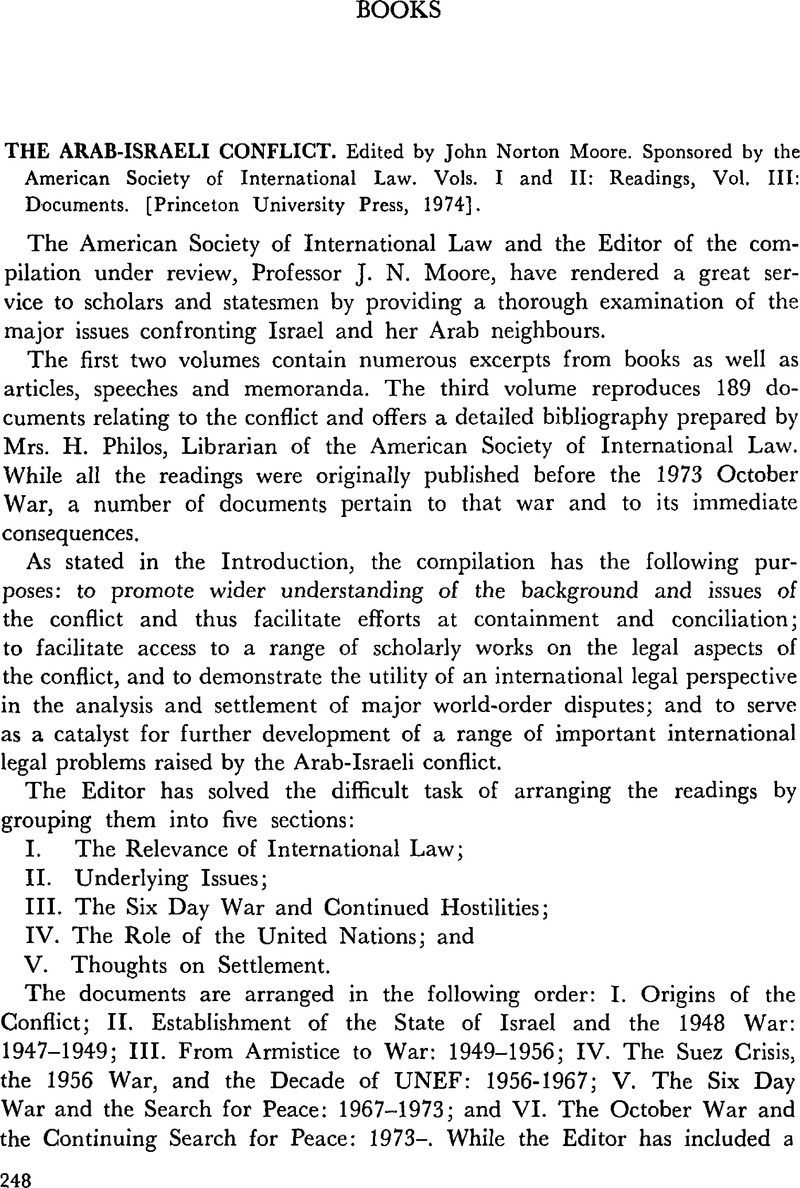No CrossRef data available.
Published online by Cambridge University Press: 12 February 2016

1 See text of the report in Miller, David Hunter, My Diary of the Peace Conference, with Documents, vol. 4 (1928), pp. 263–4.Google Scholar The Director of the section (also known as the inquiry commission) was Dr. Sidney F. Mezes of the College of the City of New York. Walter Lippman was the Secretary and David Hunter Miller of the New York Bar was Treasurer. For details see Palestine, A Study of Jewish, Arab and British Policies, vol. 1 (1974), p. 244. This volume, published for the Esco Foundation for Palestine, Inc., contains a facsimile of the Intelligence Section's recommendations on Palestine (pp. 247 and 249).
2 See Papers Relating to the Foreign Relations of the United States, The Paris Peace Conference, 1919, vol. 3 (1943) p. 891; also David Hunter Miller, op. cit., vol. 14 (1928), p. 230.
3 These Articles deal with freedom of navigation in time of war and with the task of the “Agents in Egypt of the Signatory Powers” in supervising the execution of the Convention.
4 The passage quoted proceeds as follows: “If one of us were to see his home the object of nightly attacks and bullets piercing his window-panes—and if, on one occasion, when the incident was accompanied by cries of ‘death’ and ‘kill him’, he were to go out armed with a gun to disperse the aggressors—I assure you that no tribunal, no court of law in Belgium, would refuse to vindicate his action on grounds of self-defence. Israel—I am convinced—was in just that position…” (ibid.)
5 Following their discussions on 16–18 Nov. 1956, President Nasser and the Secretary-General drew up an Aide-mémoire (U.N. Doc. 3375, 20 Nov. 1956), in which the Government of Egypt declared that “when exercising its sovereign rights on any matter concerning the presence and functioning of UNEF, it will be guided, in good faith, by its acceptance of General Assembly resolution 1000 (ES-I) of 5 November 1956”. The United Nations, for its part, declared “that the activities of UNEF will be guided, in good faith, by the task established for the Force” in resolutions 1000 (ES-I) and 997 (ES-I); in particular, the United Nations, “understanding this to correspond to the wishes of the Government of Egypt”, reaffirmed its willingness “to maintain UNEF until its task is completed”.
In resolution 1000 (ES-I), the General Assembly established “a United Nations Command for an emergency international Force to secure and supervise the cessation of hostilities” in accordance with all the terms of resolution 997 (ES-I), adopted by the Assembly on 2 November 1956. The latter resolution urged, inter alia, the parties to the Armistice Agreements promptly to withdraw all forces behind the armistice lines, to desist from raids across the armistice lines, and to observe scrupulously the provisions of the Armistice Agreement.